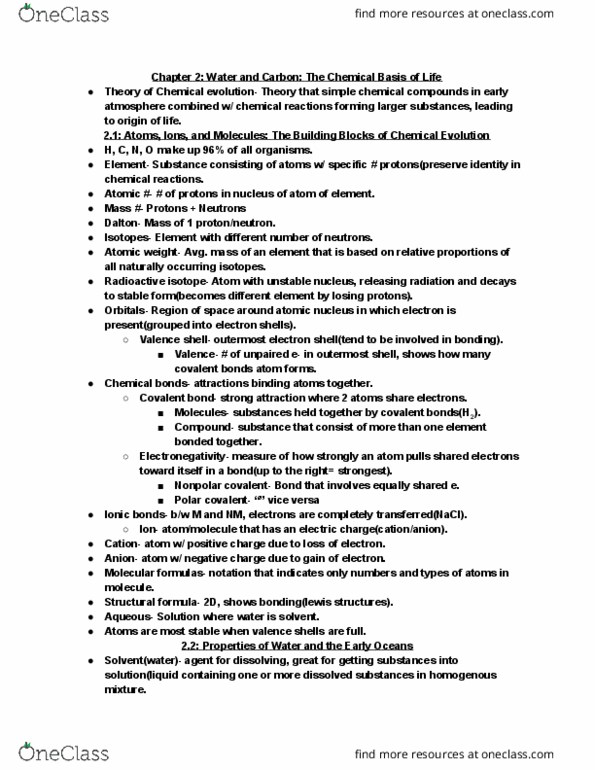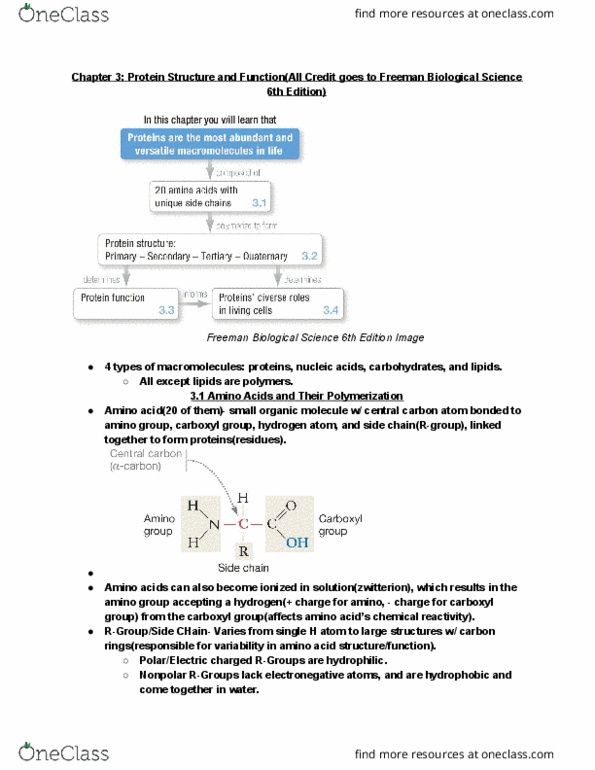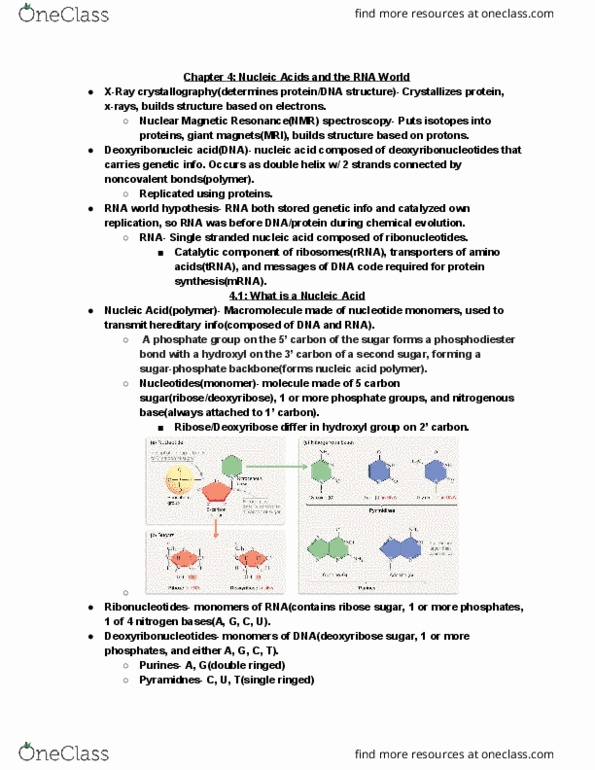BIOLOGY 1113 Lecture Notes - Lecture 5: Covalent Bond, Hydrogen Bond, Amine
BIOLOGY 1113 verified notes
5/45View all
Document Summary
Chapter 3: protein structure and function(all credit goes to freeman biological science. 4 types of macromolecules: proteins, nucleic acids, carbohydrates, and lipids. Amino acid(20 of them)- small organic molecule w/ central carbon atom bonded to amino group, carboxyl group, hydrogen atom, and side chain(r-group), linked together to form proteins(residues). Amino acids can also become ionized in solution(zwitterion), which results in the amino group accepting a hydrogen(+ charge for amino, - charge for carboxyl group) from the carboxyl group(affects amino acid"s chemical reactivity). R-group/side chain- varies from single h atom to large structures w/ carbon rings(responsible for variability in amino acid structure/function). Nonpolar r-groups lack electronegative atoms, and are hydrophobic and come together in water. Macromolecule- large organic molecule made up of smaller molecules(monomers), joined together into polymer(proteins, nucleic acids, polysaccharides). Monomer- small molecule that covalently binds to other molecules to form macromolecule. Polymer- large molecule composed of small monomers bonded together(proteins, nucleic acids, polysaccharides).




